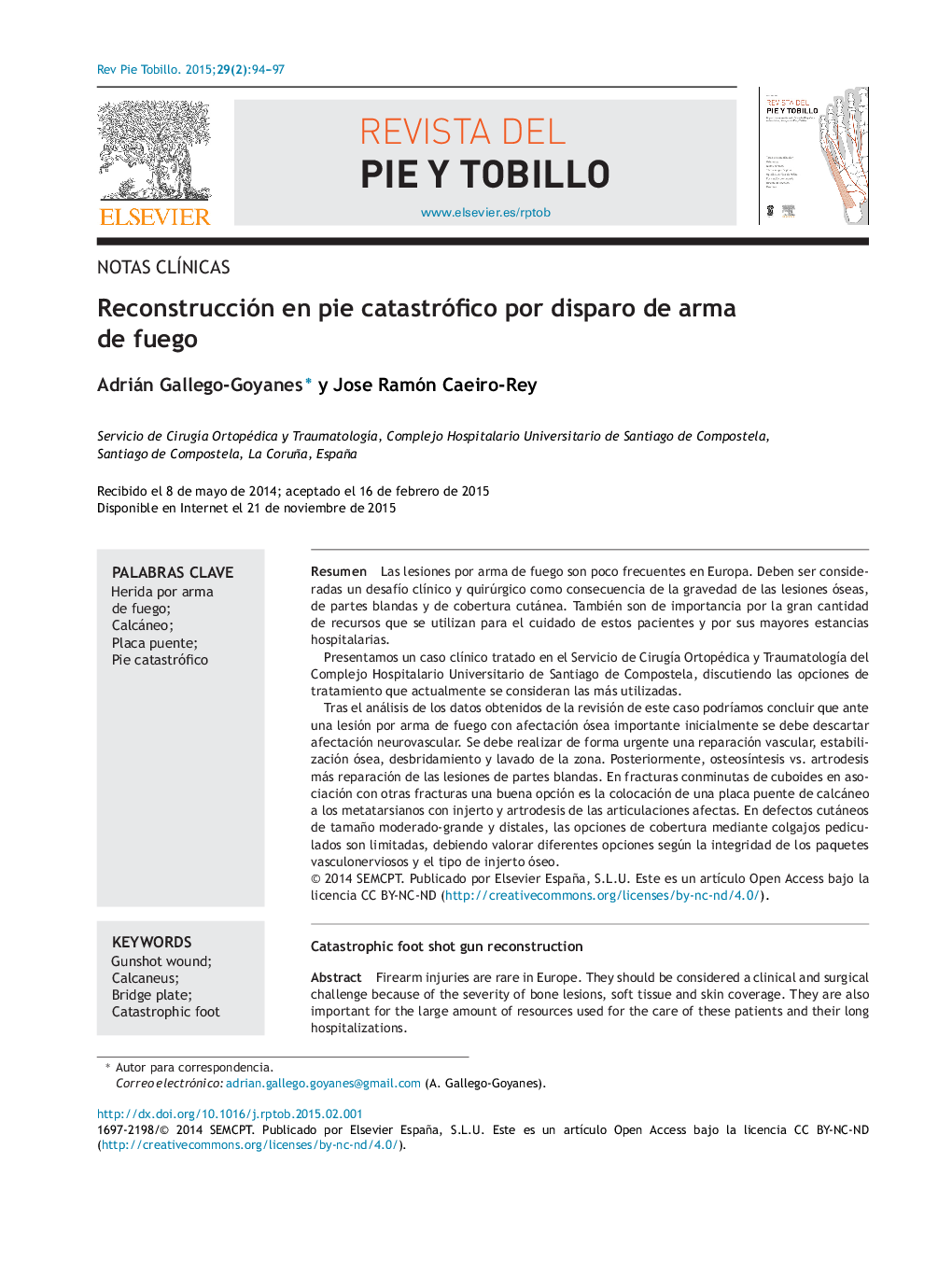| Article ID | Journal | Published Year | Pages | File Type |
|---|---|---|---|---|
| 4306218 | Revista del Pie y Tobillo | 2015 | 4 Pages |
ResumenLas lesiones por arma de fuego son poco frecuentes en Europa. Deben ser consideradas un desafío clínico y quirúrgico como consecuencia de la gravedad de las lesiones óseas, de partes blandas y de cobertura cutánea. También son de importancia por la gran cantidad de recursos que se utilizan para el cuidado de estos pacientes y por sus mayores estancias hospitalarias.Presentamos un caso clínico tratado en el Servicio de Cirugía Ortopédica y Traumatología del Complejo Hospitalario Universitario de Santiago de Compostela, discutiendo las opciones de tratamiento que actualmente se consideran las más utilizadas.Tras el análisis de los datos obtenidos de la revisión de este caso podríamos concluir que ante una lesión por arma de fuego con afectación ósea importante inicialmente se debe descartar afectación neurovascular. Se debe realizar de forma urgente una reparación vascular, estabilización ósea, desbridamiento y lavado de la zona. Posteriormente, osteosíntesis vs. artrodesis más reparación de las lesiones de partes blandas. En fracturas conminutas de cuboides en asociación con otras fracturas una buena opción es la colocación de una placa puente de calcáneo a los metatarsianos con injerto y artrodesis de las articulaciones afectas. En defectos cutáneos de tamaño moderado-grande y distales, las opciones de cobertura mediante colgajos pediculados son limitadas, debiendo valorar diferentes opciones según la integridad de los paquetes vasculonerviosos y el tipo de injerto óseo.
Firearm injuries are rare in Europe. They should be considered a clinical and surgical challenge because of the severity of bone lesions, soft tissue and skin coverage. They are also important for the large amount of resources used for the care of these patients and their long hospitalizations.We report a case treated in the Department of Orthopedic Surgery and Traumatology of the University Hospital of Santiago de Compostela, discussing treatment options currently considered as the most used.After analyzing the data obtained from the review of this case we might conclude that, in the presence of a gunshot injury with significant bone involvement, initially, neurovascular involvement of the member should be ruled. Vascular repair, bone stabilization, debridement and lavage of the area must be performed urgently. Subsequently, osteosynthesis vs. arthrodesis must be performed, as well as soft tissue injury repair. In comminuted fractures of the cuboid associated to other fractures, other good option is the placement of a bridge plate from calcaneus to the metatarsals, bone graft and arthrodesis of the affected joints. In distal moderate-large size skin defects, coverage options are limited by pedicle flaps, having to evaluate different options depending on the integrity of the vascular-nerve bundles and the type of bone graft.
